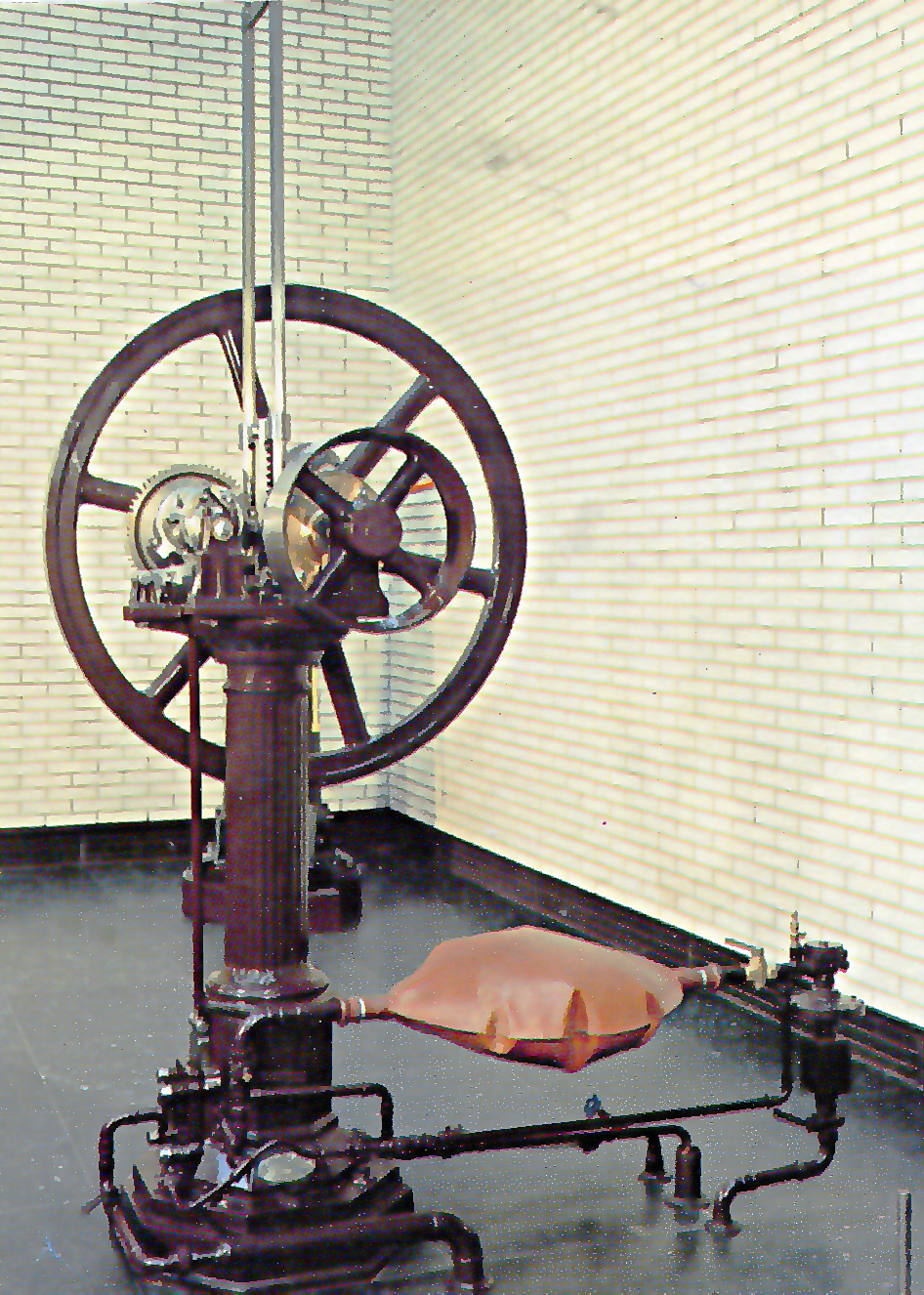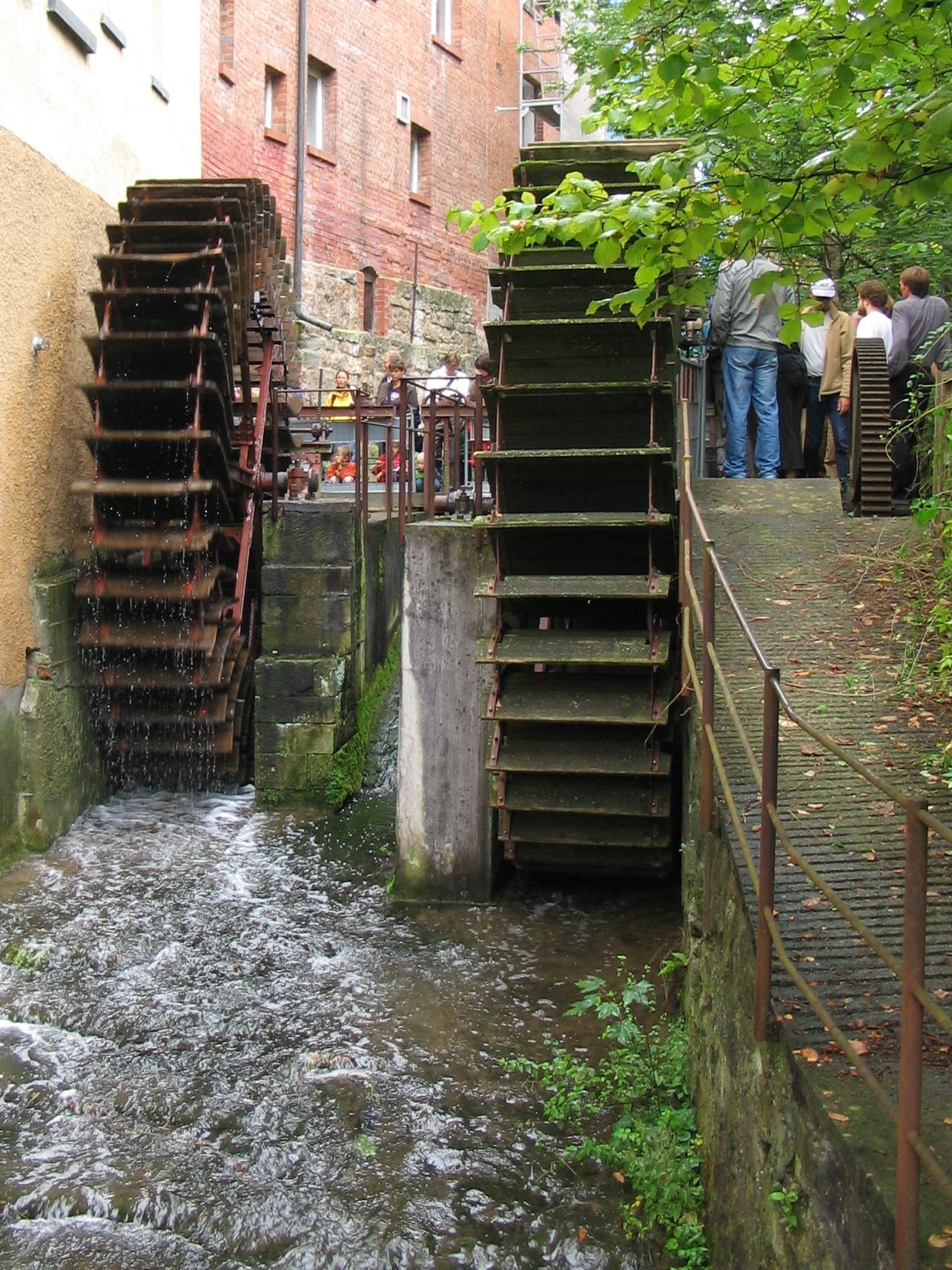|
Felice Matteucci
Felice Matteucci (February 12, 1808 – September 13, 1887) was an Italian hydraulic engineer who co-invented an internal combustion engine with Eugenio Barsanti. Their patent request was granted in London on June 12, 1854, and published in London's Morning Journal under the title "Specification of Eugene Barsanti and Felix Matteucci, Obtaining Motive Power by the Explosion of Gases", as documented by the Fondazione Barsanti e Matteucci. Biography Born in Lucca, Tuscany, Matteucci studied hydraulic and mechanical engineering, first in Paris, then in Florence. In 1851 he met Father Barsanti and appreciated his ideas for a new type of engine. They worked together to turn the primary concept into a manufacturable item, eventually developing a model suitable for mass production. Its construction was entrusted to Bauer & Co. of Milan, a company also known as Helvetica, which delivered the motor at the beginning of 1863. The success of the engine, which was much more efficient tha ... [...More Info...] [...Related Items...] OR: [Wikipedia] [Google] [Baidu] |
Hydraulic Engineers
Hydraulic engineering as a sub-discipline of civil engineering is concerned with the flow and conveyance of fluids, principally water and sewage. One feature of these systems is the extensive use of gravity as the motive force to cause the movement of the fluids. This area of civil engineering is intimately related to the design of bridges, dams, Channel (geography), channels, canals, and levees, and to both sanitary and environmental engineering. Hydraulic engineering is the application of the principles of fluid mechanics to problems dealing with the collection, storage, control, transport, regulation, measurement, and use of water.Prasuhn, Alan L. ''Fundamentals of Hydraulic Engineering''. Holt, Rinehart, and Winston: New York, 1987. Before beginning a hydraulic engineering project, one must figure out how much water is involved. The hydraulic engineer is concerned with the transport of sediment by the river, the interaction of the water with its alluvial boundary, and the oc ... [...More Info...] [...Related Items...] OR: [Wikipedia] [Google] [Baidu] |
19th-century Italian Inventors
The 19th century began on 1 January 1801 (represented by the Roman numerals MDCCCI), and ended on 31 December 1900 (MCM). It was the 9th century of the 2nd millennium. It was characterized by vast social upheaval. Slavery was Abolitionism, abolished in much of Europe and the Americas. The First Industrial Revolution, though it began in the late 18th century, expanded beyond its British homeland for the first time during the 19th century, particularly remaking the economies and societies of the Low Countries, France, the Rhineland, Northern Italy, and the Northeastern United States. A few decades later, the Second Industrial Revolution led to ever more massive urbanization and much higher levels of productivity, profit, and prosperity, a pattern that continued into the 20th century. The Catholic Church, in response to the growing influence and power of modernism, secularism and materialism, formed the First Vatican Council in the late 19th century to deal with such problems an ... [...More Info...] [...Related Items...] OR: [Wikipedia] [Google] [Baidu] |
People From Lucca
The term "the people" refers to the public or common mass of people of a polity. As such it is a concept of human rights law, international law as well as constitutional law, particularly used for claims of popular sovereignty. In contrast, a people is any plurality of persons considered as a whole. Used in politics and law, the term "a people" refers to the collective or community of an ethnic group or nation. Concepts Legal Chapter One, Article One of the Charter of the United Nations states that "peoples" have the right to self-determination. Though the mere status as peoples and the right to self-determination, as for example in the case of Indigenous peoples (''peoples'', as in all groups of indigenous people, not merely all indigenous persons as in ''indigenous people''), does not automatically provide for independent sovereignty and therefore secession. Indeed, judge Ivor Jennings identified the inherent problems in the right of "peoples" to self-determination, as i ... [...More Info...] [...Related Items...] OR: [Wikipedia] [Google] [Baidu] |
1887 Deaths
Events January * January 11 – Louis Pasteur's anti-rabies treatment is defended in the Académie Nationale de Médecine, by Dr. Joseph Grancher. * January 20 ** The United States Senate allows the United States Navy to lease Pearl Harbor as a naval base. ** British emigrant ship ''Kapunda (ship), Kapunda'' sinks after a collision off the coast of Brazil, killing 303 with only 16 survivors. * January 21 ** The Amateur Athletic Union (AAU) is formed in the United States. ** Brisbane receives a one-day rainfall of (a record for any Australian capital city). * January 24 – Battle of Dogali: Ethiopia, Abyssinian troops defeat the Italians. * January 28 ** In a snowstorm at Fort Keogh, Montana, the largest snowflakes on record are reported. They are wide and thick. ** Construction work begins on the foundations of the Eiffel Tower in Paris, France. February * February 2 – The first Groundhog Day is observed in Punxsutawney, Pennsylvania. * February 4 – T ... [...More Info...] [...Related Items...] OR: [Wikipedia] [Google] [Baidu] |
1808 Births
Events January–March * January 1 ** The importation of slaves into the United States is formally banned, as the 1807 Act Prohibiting Importation of Slaves takes effect. However Americans still continue the slave trade by transporting Africans to Cuba and Brazil.. ** Sierra Leone becomes a British Crown Colony. * January 22 – Transfer of the Portuguese court to Brazil: John (Dom João), Prince Regent, and the Braganza royal family of Portugal arrive in their colony of Brazil in exile from the French occupation of their home kingdom. * January 26 – Rum Rebellion: On the 20th anniversary of the foundation of the colony of New South Wales, disgruntled military officers of the New South Wales Corps (the "Rum Corps") overthrow and imprison Governor William Bligh and seize control of the colony. * February 2 – French troops take Rome as part of the Napoleonic Wars. * February 6 – The ship '' Topaz'' (from Boston April 5, 1807, hunting seals) ... [...More Info...] [...Related Items...] OR: [Wikipedia] [Google] [Baidu] |
History Of The Internal Combustion Engine
Internal combustion engines date back to between the 10th and 13th centuries, when the first rocket engines were invented in China. Following the first commercial steam engine (a type of external combustion engine) by Thomas Savery in 1698, various efforts were made during the 18th century to develop equivalent internal combustion engines. In 1791, the English inventor John Barber patented a gas turbine. In 1794, Thomas Mead patented a gas engine. Also in 1794, Robert Street patented an internal-combustion engine, which was also the first to use liquid fuel (petroleum) and built an engine around that time. In 1798, John Stevens designed the first American internal combustion engine. In 1807, French engineers Nicéphore and Claude Niépce ran a prototype internal combustion engine, using controlled dust explosions, the Pyréolophore. This engine powered a boat on the river in France. The same year, the Swiss engineer François Isaac de Rivaz built and patented a hydrogen an ... [...More Info...] [...Related Items...] OR: [Wikipedia] [Google] [Baidu] |
Capannori
Capannori () is an Italian town and ''comune'' in the province of Lucca, in northern Tuscany. History The 40 hamlets of Capannori are located on the lands that once corresponded to the eastern territories of the Republic of Lucca. Most of those hamlets date back to medieval times. Colognora di Compito was featured in the 2008 film '' Miracle at St. Anna''. Geography Overview Located in south of its province, next to the provinces of Pisa and Pistoia, the municipality borders with Altopascio, Bientina, Borgo a Mozzano, Buti, Calci, Lucca, Montecarlo, Pescia, Porcari, San Giuliano Terme, and Villa Basilica. Frazioni Capannori counts 40 hamlets (''frazioni''). The most populated village is not the town of Capannori, but the hamlet of Marlia (5,000 inhabitants). The hamlets of Capannori are: Badia di Cantignano, Camigliano, Carraia, Castelvecchio di Compito, Colle di Compito (the site of prisoner-of-war camp PG 60 during World War II), Colognora di Compito, Coselli, G ... [...More Info...] [...Related Items...] OR: [Wikipedia] [Google] [Baidu] |
Nicolaus August Otto
Nicolaus August Otto (10 June 1832 – 26 January 1891) was a German engineer who successfully developed the compressed charge internal combustion engine which ran on petroleum gas and led to the modern internal combustion engine. The Association of German Engineers (VDI) created DIN standard 1940 which says "Otto Engine: internal combustion engine in which the ignition of the compressed fuel-air mixture is initiated by a timed spark", which has been applied to all engines of this type since. Biography Nicolaus August Otto was born on 10 June 1832 in Holzhausen an der Haide, Germany. He was the youngest of six children. His father died in 1832. He began school in 1838. After six years of good performance he moved to the high school in Langenschwalbach until 1848. He did not complete his studies but was cited for good performance. His main interest in school had been in science and technology but he graduated after three years as a business apprentice in a small merchandise ... [...More Info...] [...Related Items...] OR: [Wikipedia] [Google] [Baidu] |
Hydraulic
Hydraulics () is a technology and applied science using engineering, chemistry, and other sciences involving the mechanical properties and use of liquids. At a very basic level, hydraulics is the liquid counterpart of pneumatics, which concerns gases. Fluid mechanics provides the theoretical foundation for hydraulics, which focuses on applied engineering using the properties of fluids. In its fluid power applications, hydraulics is used for the generation, control, and transmission of Power (physics), power by the use of pressure, pressurized liquids. Hydraulic topics range through some parts of science and most of engineering modules, and they cover concepts such as pipe Volumetric flow rate, flow, dam design, fluidics, and fluid control circuitry. The principles of hydraulics are in use naturally in the human body within the vascular system and erectile tissue. ''Free surface hydraulics'' is the branch of hydraulics dealing with free surface flow, such as occurring in rivers ... [...More Info...] [...Related Items...] OR: [Wikipedia] [Google] [Baidu] |
Rain Gauge
A rain gauge (also known as udometer, ombrometer, pluviometer and hyetometer) is an instrument used by meteorologists and Hydrology, hydrologists to gather and measure the amount of liquid precipitation in a predefined area, over a set period of time. It is used to determine the depth of precipitation (usually in mm) that occurs over a unit area and measure rainfall amount. History People living in India and the Ancient Greece, Ancient Greeks began to record rainfall around 400 to 500 BCE.Ian Strangeways, A History of rain gauges, TerraData, 2010 In India the readings were correlated against expected growth. In the Arthashastra, used for example in Magadha (Mahajanapada), Magadha, precise standards were set as to grain production. Each state storehouse was equipped with a rain gauge to classify land for taxation purposes. Rainfall measurement was also mentioned in the Jewish text in Palestine. In 1247, the Song (Chinese surname), Song Chinese mathematician and inventor Qin Jiushao ... [...More Info...] [...Related Items...] OR: [Wikipedia] [Google] [Baidu] |





